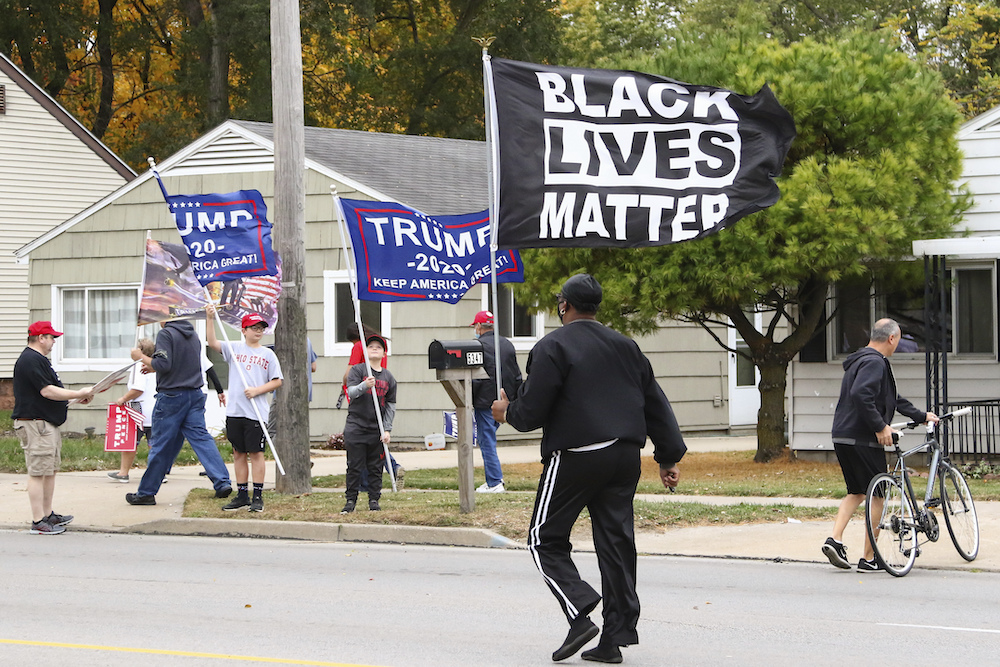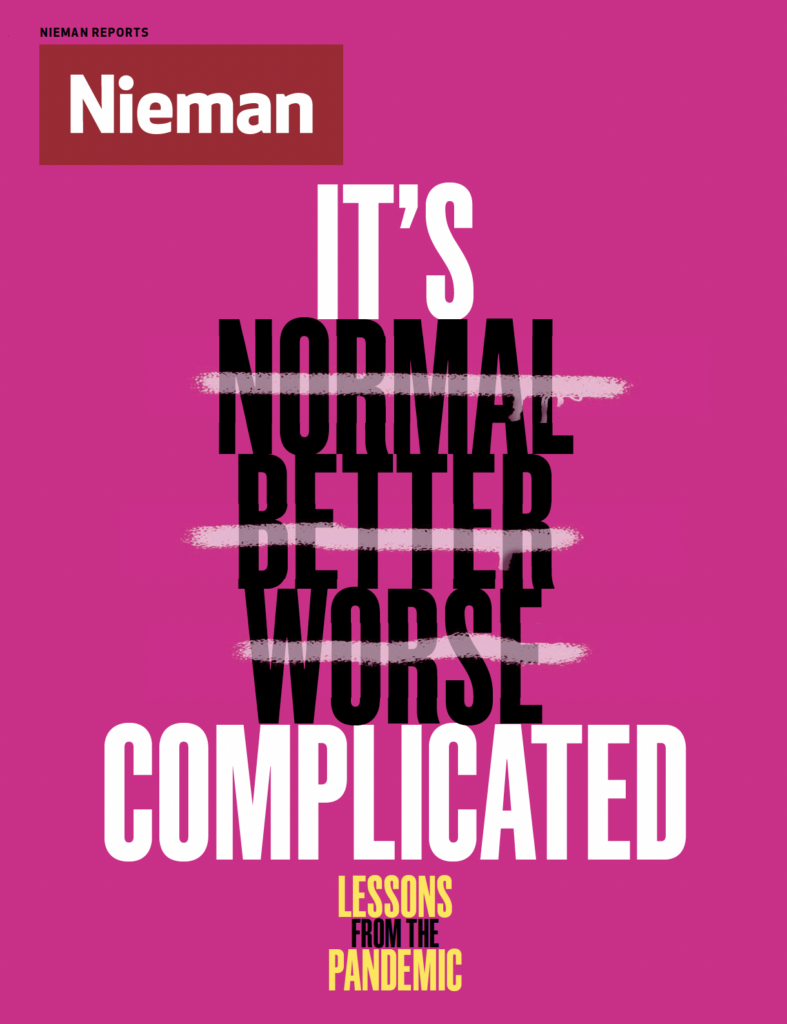“I feel like you're inhibiting yourself when you're wearing a mask,” Rachel Antonelli, a pregnant bank teller, said when I interviewed her on a street corner.
Like many people in this conservative town, Antonelli planned to vote for Donald Trump. She recounted how “credible news sources” – articles posted by friends on social media – reported that you could catch the virus from wearing a mask, a view clearly contradicted by nearly all public health experts. Skeptical of the science and against closures, she took a fairly fatalistic view of the pandemic: “If you are a person that's going to get it, you’re going to get it.”
That was hardly the prevailing attitude just 20 miles south in Westerville, where restaurants stood empty and nearly everyone was masked. As she walked through an outdoor shopping center, Patty Jordan, a carefully double-masked retiree, worried about the virus and feared that the lack of more stringent restrictions was costing lives. Trump, she said, “needs to take responsibility” for his role in spreading illness and death across the country.
Jordan, as you probably can guess, was a Biden voter.
In a different time, the pandemic would have been the kind of once-in-a-generation event that rallied a nation. A moment of national crisis, where we all rolled up our sleeves, rationed our sugar and sewed sweaters – or at least tweeted some supportive messages.
But from our early days of sourdough baking, there hasn’t been a whole lot of national unity. As college students packed South Dakota bars, restaurants shuttered in New Mexico. While around 20 million people collected unemployment, the country’s billionaires saw their assets grow by $1.3 trillion. Even illness itself proved to be unequal: Being Black means you are three times as likely to get infected.
Our lived realities of the past year have been vastly different. But perhaps more importantly, when it comes to our politics, so have our perceptions. We simply don’t believe the same set of facts, even when it comes to an issue as essential as our own mortality.
This is a political problem of the most fundamental kind: A decline of agreement on central facts. Some scholars have even given an ominous name to our new reality – “truth decay." That lack of consensus bleeds into our daily lives: Studies have found that the biggest predictor of local mask use was not demographic characteristics or local policy, but the percentage of people in the area who voted for Donald Trump in 2016.
Increasingly, our politics are defined by two hostile identity groups who see the other not only as political opponents but as threatening and immoral. In Washington, bipartisan compromise feels nearly unimaginable. And beyond the Capitol, the two parties aren’t even having the same conversation, never mind speaking to each other. One survey in March found that Republicans had heard more about the “cancelling” of Dr. Seuss than the $1.9 trillion stimulus package. Hatred between Republicans and Democrats, according to an analysis by some prominent political scientists, now “exceeds long standing antipathies around race and religion.”
For those of us who cover politics, explaining this widening gap required developing a new set of skills. So, we educated ourselves on fantastical conspiracy theories. We learned to call out presidential lies, even in our news chyrons. We dropped “bothsideism” to call out attacks on our democracy, like fighting the results of a legitimate election. And we wrote about race in new ways, tracking the impact of views long constrained to the fringes of our political debate on our national conversation.
During the pandemic, we did all of that while learning to cover the country without leaving our houses. The mythology of getting a window into the soul of America became a view of my shower curtain, as I conducted interviews in the only room in my apartment with a lock to keep out remote-schooling children. It was easy to miss the access to voters, strategists, and politicians; the kind of reporting serendipity that sometimes happens just by showing up.
But we all found ways to innovate the conventions of political reporting, changing the decades-old rhythms and day-to-day logistics of news gathering. I tracked down voters by phone and devoted some of those hours that would have been spent in airports to coverage of voting rights.
Before the pandemic, political journalists often wrote about then-primary candidate Joe Biden as a kind of restoration, a reversion to the political norms that we covered for decades. Some of those traditions have already returned to a Washington roiled by the chaos of the Trump years. The daily White House press briefing is back, as are policy papers and quieter weekends.
But political journalists would be wise not to let that perception of normalcy fool them. The country will face a long period of cleanup from policy choices made during this period: Children suffering the consequences of a “lost year.” Job losses that upended savings and securities for so many families. Mental illness and grief that will linger. Pandemics are times of massive upheaval and the national impact doesn't end when we finally take off our masks.
As I look toward the future that awaits us after the pandemic, I can't stop thinking about those two Ohio towns. There is no “return to normal” coming to those places, no grand unification of their beliefs, news sources and values. Sure, we may attend campaign rallies once again. But America will be different. And it will take all our skills – both the traditional and those we learned in crisis – to cover that new reality.
Lisa Lerer is a national political correspondent for The New York Times and 2018 Nieman Fellow.
Lessons from the Pandemic
Hope that the coronavirus is finally being brought under control has given rise to planning for a return to “normal.” But can, or should, journalism return to a pre-pandemic “normal?” Across newsrooms, the way we once covered education, labor, theater—any beat—is unlikely to be sufficient for the moment we are entering. What are the lasting lessons of this time, and how should we do journalism differently? These are the questions to which Nieman Reports is seeking answers in our essay series, Lessons from the Pandemic.




